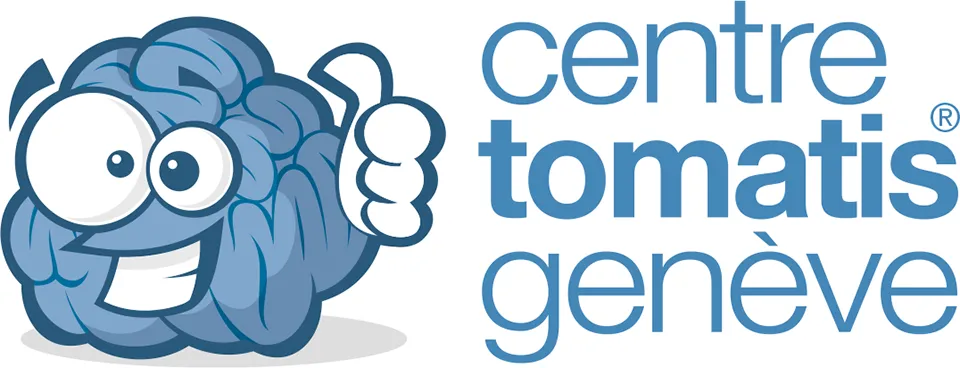ADHD: are children diagnosed as hyperactive really so?

Specialised consultations are overflowing. Parents are panicking. The children become anxious. The national education system is getting hold of it. What is this ADD/ADHD that everyone is talking about? Are the diagnoses correct? Investigation into a disorder that is the subject of debate.
Source: http://www.psychologies.com/Famille/Enfants/Epanouissement-de-l-enfant/Articles-et-Dossiers/TDA-H-les-enfants-diagnostiques-hyperactifs-le-sont-ils-vraiment/5Revoir-les-modes-de-vie
It is a small brochure from the French Ministry of Education with a brightly coloured drawing of a child. At the bottom, it says: "Children with attention deficit hyperactivity disorder and their schooling". The booklet is aimed at teachers, so that they can identify 'ADD/ADHD' in their classrooms. They have "difficulty sustaining [their] attention", they are "over the moon", they sometimes "talk and act before thinking", they tend to "talk too much", to "move their hands and feet excessively", they are sick! The seven pages of recommendations and descriptions could apply to anyone.
Calming the restless, refocusing the distracted
A thousand psychiatrists, psychoanalysts and child psychiatrists do not appreciate the initiative. In a petition sent in mid-November to Emmanuel Macron and the Ministers of Health and Education, they demand the withdrawal of this booklet. Among their arguments, the fact that it is not up to teachers or school psychologists to make psychiatric diagnoses.
Jacques Dayan, a child psychiatrist at the CHU in Rennes and a psychoanalyst, did not initiate this appeal, but he frequently receives parents who are convinced that their child suffers from ADD/ADHD, and who, in fact, relay remarks made by the school institution: "Schools have been asked to take on a lot, especially children with difficulties," he analyses. With the arrival of the drug treatment proposed for ADD/ADHD, the school system was given the opportunity to calm down the agitated and sometimes distracted children, who could not be calmed by ordinary teaching methods. So we have gradually moved from a timid request from the teaching profession trying to figure out how to intervene with difficult children, some of whom are very distressed, to the requirement to give a product that calms and allows everyone to work. And this satisfies the educational sphere, the parents and even the children, because they can progress at school, fit in with a high success rate."
Diagnosed with ADD/ADHD at the age of 10 following difficulties at school and frequent fights in the playground, Gabriel, aged 13, does not for a second consider not taking his psychostimulant: "It allows me to be me and better", he says. Jacques Dayan tells us what one of his teenage patients told him recently: "With Rιtalin, I can sit and endure classes all day long where I am usually bored. Jacques Dayan: "Her deep relationship with her school situation, which she considers painful and uninteresting, does not change radically, but she manages to endure it without moving and, she says: "Sometimes I learn a little.
In his Centre de référence des déficits de l'attention et hyperactivité, in Bordeaux, Professor Manuel Bouvard, a child psychiatrist, receives 1,200 children a year. He is overwhelmed by requests, firstly because there is a lack of specialised consultations, but he also notes "a fashion phenomenon. We are now experiencing an over-diagnosis effect because of the status of ADD/ADHD, which has changed from medical to social.
In a study published in The Lancet last October 2, German researchers show that in fifty years the number of ADD/ADHD diagnoses and the number of prescriptions for psychostimulants have exploded in developed countries, and mention the high probability of diagnostic errors.
One disorder can hide another
Jeanne Siaud-Facchin will not contradict them. A clinical psychologist and former hospital attaché in Paris and Marseille, she founded psychological consultation centres for children and adolescents. Between January 2005 and 11 September 2017, she received 25,688 children in consultation, 5,500 for attention problems. In twelve years, she has not noticed an increase of children with ADD/ADHD. It's 5%, not more, she says. The estimated average rate per country is between 5% and 7% for children and adolescents3. "Our statistics have not changed. However, more and more parents are coming to us saying: 'We have been told that he or she is ADD/ADHD', 'The school psychologist told us that...'. And our check-ups reveal that the child is no more ADD/ADHD than I am a prima ballerina," she says. In her experience, children are labelled ADD/ADHD when they are dyspraxic (they have visual-motor coordination and neurovisual problems), or 'gifted', or tired (lack of sleep exhausts and excites), or with ODD (because they feel insecure and are under pressure), or victims of anxiety. When a child is not confident, when he is worried about the disappearance of his pet, the birth of a sister, the divorce of his parents, it becomes difficult for him to concentrate. "These "spinning top" children move in all directions to keep their balance. Movement allows them to put their thoughts at a distance. They have genuine attention disorders, but they are not ADD/ADHD," concludes the psychologist. The difficulties can also be linked to age. The diagnosis is often made in the first year of primary school: the attentional capacities are different between a child born at the beginning of the year and another in December. Finally, many psychiatrists mention the comorbidity of ADD/ADHD, i.e. the combination of several symptoms: between 57% and 87% of children have an associated disorder4 (depression, anxiety, autism, etc.). Making the diagnosis is therefore not easy.
A sleeping control tower
The identification of a disorder that is ultimately quite mysterious is still unclear. This is due to the "criteria defined by the psychiatric manuals we use," says Louis Véra5 , a child psychiatrist specialising in the treatment of ADHD. They have been cobbled together by people who do not have an in-depth vision. Real ADD/ADHD is the consequence of a disturbance in executive functions. To explain to parents what their child is suffering from, Prof. Bouvard uses the metaphor of the control tower: "Imagine an airport. The planes that arrive are the information we receive from the outside. The ones that leave are the behaviour we adopt. ADD/ADHD is a control tower problem: it doesn't work. This attention problem will affect learning, organisation, their relational and emotional regulation. It is as if the control tower is asleep. That's why stimulants can work.
Marc always knew that his daughter Lola had attention problems. At four months old, she couldn't sit still: "We had to change her position every ten minutes. Later, when I read her stories, she would turn the pages very quickly. The restlessness disappeared as she grew up, but the attention problems persisted and the worries at school began. At the age of 7, in CE1, on the advice of the teacher, the parents went to see a psychomotrician. She did a check-up, then directed them to an expensive graphotherapist, far from home, who told them that she was going to treat their child with massages and reiki. We ran away!" exclaims Marc. Catherine Vanier, a psychoanalyst, got us out of this hellish spiral. She asked herself whether Lola's anxiety was the cause or the consequence of her attention problems. Since then, we have been on a treatment programme. She has been diagnosed with ADD without hyperactivity. We are trying to avoid Rιtalin. For the moment, the little girl is practising "cognitive remediation", a programme that helps cultivate concentration skills. Between the tests, the assessments, the consultations with specialists, Lola's parents have spent nearly a thousand euros. A thousand euros to name and try to alleviate the suffering of a child that is as indisputable as it is complex. Because ADD/ADHD is not physiologically detectable. Brain imaging does not allow it to be identified: "A slight reduction in grey matter in certain regions of the brain and a slight alteration in the neuronal connection pathways linking the deep nuclei with the prefrontal cortex have been identified, but individual variability and co-morbidity are very significant," says Jacques Dayan. It is impossible to say, by observing a human brain, whether its owner has ADD/ADHD or not.
Reviewing lifestyles
Clinicians favour a multifactorial origin. Manuel Bouvard is "convinced that the acquisition of behavioural regulation, attention and mental cognitive activity is slower or more difficult in ADD/ADHD, because the neural networks underlying these processes mature more slowly or are damaged. But neural networks are only mechanics. The causes can be multiple: major emotional or physical deficiencies, disturbing events, but also pesticides, endocrine disruptors that may have hindered the development of the baby during pregnancy... The environment plays a key role in the emergence of these disorders, but it can also regulate them.
The plasticity of the brain, its capacity to modify itself according to the environment in which we live, is not a myth, reminds Sarah Stern, psychiatrist and psychoanalyst, who does not believe in the diagnosis of ADD/ADHD: "A child who suffers from deficits in one area can recover the functions of this area by other means. Of course, certain cerebral areas are more or less involved in this or that task, but the connections are not the same for everyone and pathways can be created from one region to another. In addition, the division of our thought processes into different operations used for ADD/ADHD does not correspond to reality: none of these operations is independent of the other. And yet that is what we rely on to make the diagnosis!
Naming, classifying, giving meaning to ills that are difficult to locate is what the clinic of mental pathologies strives for. The borderline between normal and pathological is not always clear. Words are solid and psychological disorders are fluid. Hence our difficulty in defining them with language. But these disorders often reflect an era. Today's lifestyles contribute to the development of attention disorders in children," says Marie-France Le Heuzey6 , a psychiatrist at the Robert-Debré hospital in Paris. Children and adults are multiplying tasks and screens at the same time. I remember a boy in a consultation who told me: "I don't like school because I can't get away from the teacher". Perhaps it is no coincidence that our brains are also zapping.
ADHD, what is that ?
The term "attention deficit disorder with or without hyperactivity" (ADD/ADHD) appeared in 1980 in the DSM-III, the diagnostic and statistical manual of mental disorders published by the American Psychiatric Association. It is based on three lists of symptoms: attentional difficulties (the child is unable to sustain his or her attention), impulsivity (intolerance to waiting...) and possible hyperactivity (difficulty staying in place...). The diagnosis is generally made at the age of 6. Complex assessments are necessary. The pathology fades as the child grows up, but may also persist into adulthood.
Jacques Dayan, child psychiatrist and psychoanalyst, explains that "it is not an illness that "really" exists, that is to say, in the same way as the flu. It is what is called a 'construct'. Its manifestations, or a part of them, have been recognised since the 19th century, and it has been suggested - differently at different times - that some of them should be brought together in the most coherent and precise way possible to create this diagnosis.
Since the brain changes observed can be correlates as well as causes, deconstructions are possible as long as the facts and causes have not been clearly established.
Rιtalin... or not
Methylphenidate, the substance that makes up Rιtaline, is a derivative of amphetamines but "much less powerful", according to child psychiatrist Professor Manuel Bouvard, who does not prescribe it before the age of 7. The risks of side effects are worrying: loss of sleep, appetite, growth problems and sometimes dark thoughts. But, according to Jacques Dayan, child psychiatrist and psychoanalyst, "in certain severe cases of ADD/ADHD, the risk/benefit balance is clearly in favour of the product". The child recovers his or her growth when the drug is stopped, and if Rιtaline does not cure, it trains children to concentrate, according to its advocates. Specialists say they prescribe it as a last resort, and support through alternative therapies is booming: behavioural management (work on shorter concentration times, time evaluation, etc.), attention training with "cognitive remediation" on computers and emotional regulation.



